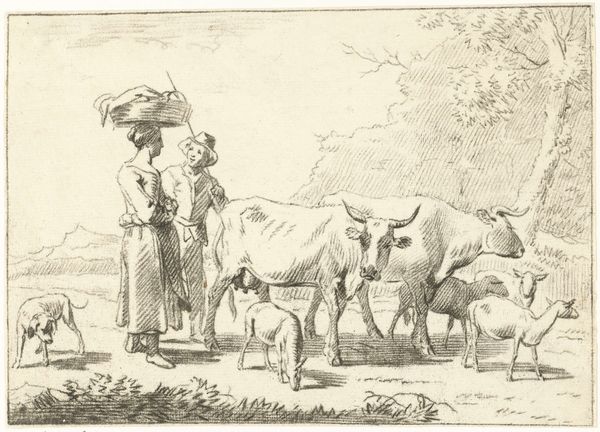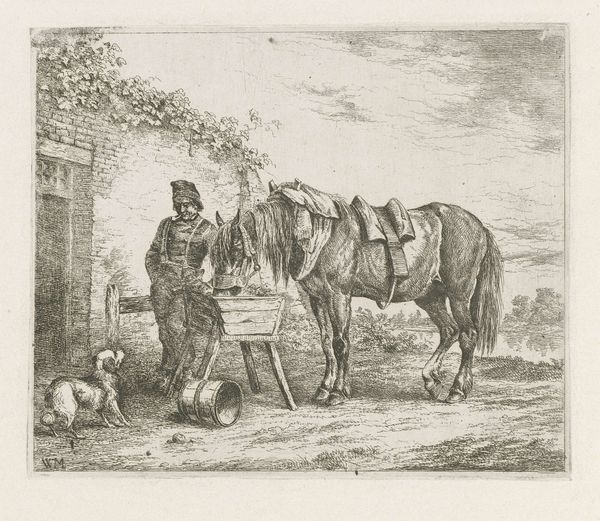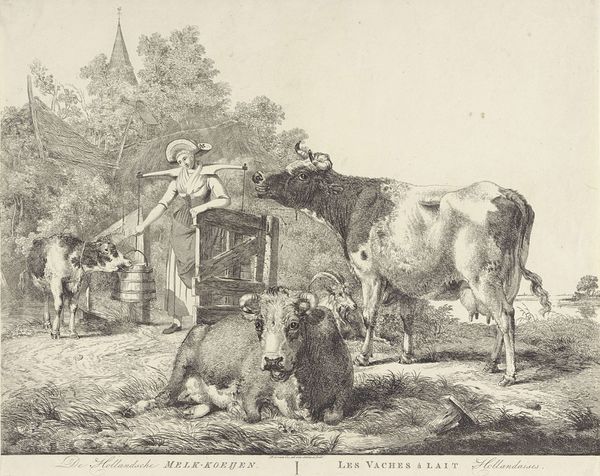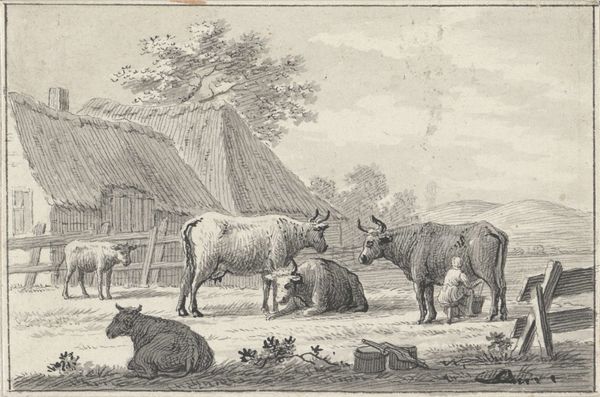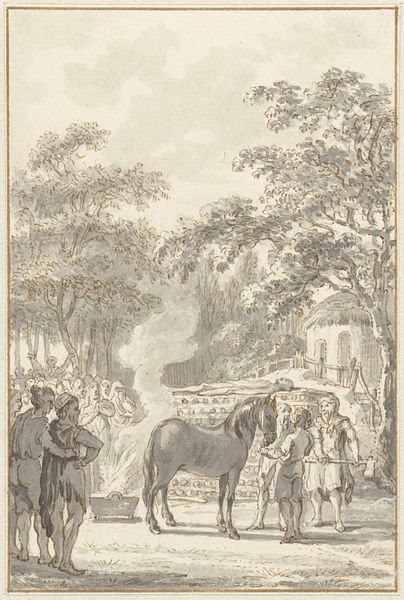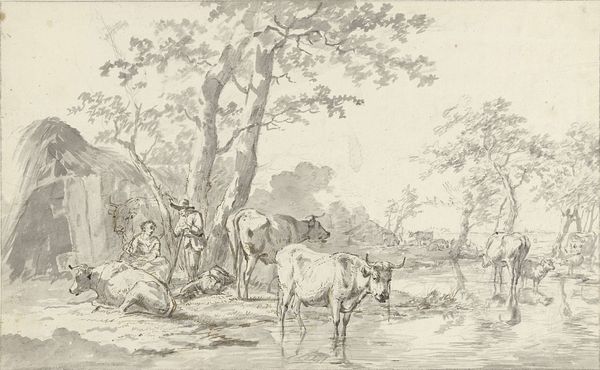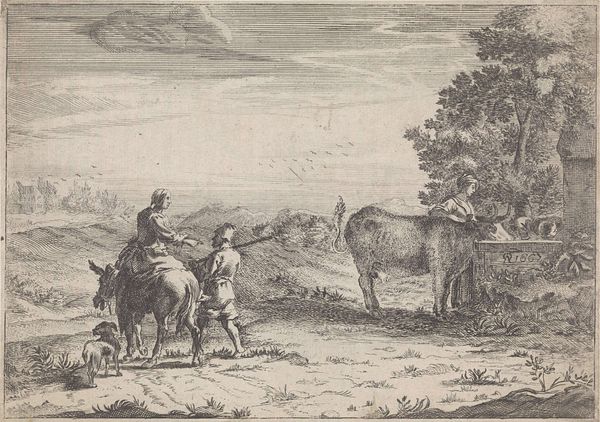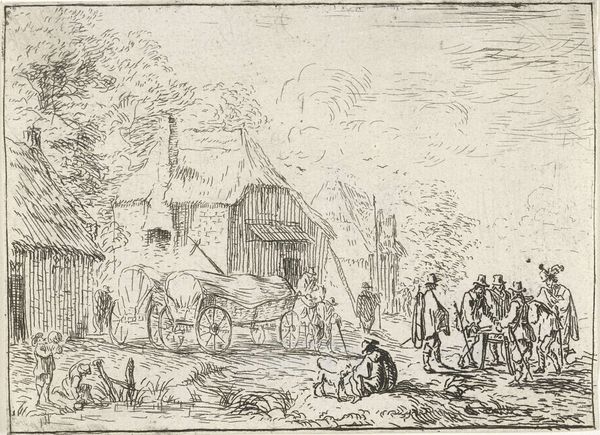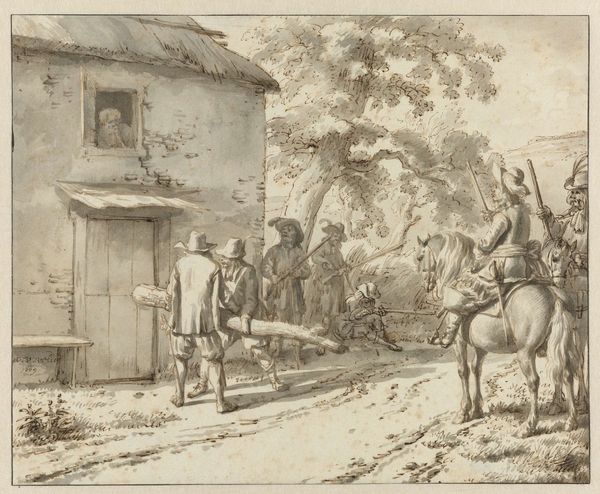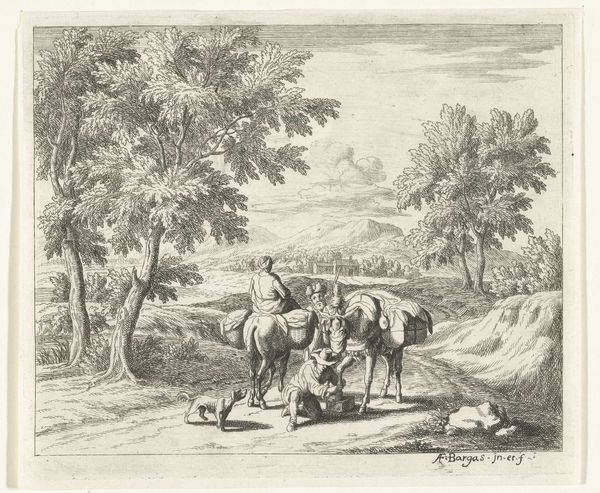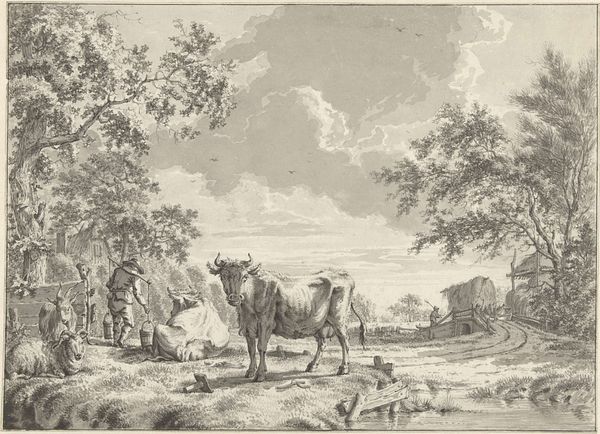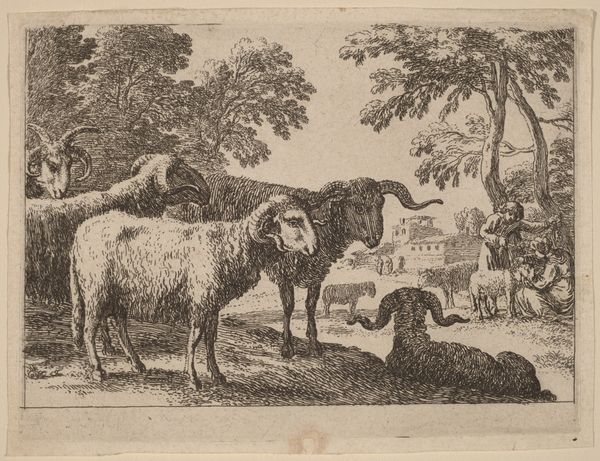
drawing, ink, pen
#
drawing
#
dutch-golden-age
#
pen sketch
#
landscape
#
ink
#
pen
#
genre-painting
#
realism
Dimensions: height 165 mm, width 214 mm
Copyright: Rijks Museum: Open Domain
Curator: Paulus Constantijn la Fargue sketched this drawing, "Boeren met een koe voor het huis", sometime between 1739 and 1782. Editor: My immediate impression is of a charming, carefully rendered scene of rural life. The delicate line work gives it a peaceful, almost nostalgic quality. Curator: La Fargue has created a microcosm of Dutch society, albeit at its humblest level. The careful detail in the thatched roof and even the placement of the dogs speaks to a specific moment in time. One where the nuclear family and labor create its core values. Editor: Precisely! It is striking how he uses line weight to guide the eye. The thatched roof contrasts to the soft rendering of the trees behind the building, adding texture while implying the labor associated with agriculture. And the posture of each of the human figures is fascinating – it is subtle! Curator: These everyday activities in La Fargue’s drawing mirror a larger, shifting societal landscape. With an increase in market exchange in the Dutch countryside and a boom in its urban centers, this artwork evokes a nostalgia for this kind of simpler life that it is slowly starting to lose. Editor: Looking at the relationships created here - the way the woman faces away from the scene towards what might be the route of distribution with those buckets, or the contrast in scale between the enormous cow and the humans surrounding it, are compelling when considering ideas of genre painting that capture moments of local context. What did genre scenes represent in Dutch society, really? Curator: These sketches provided a kind of collective mirror. They validated specific values, and perhaps masked underlying tensions between a life dependent on others' work and its potential profit and the rise of consumerism. Editor: It really asks us to reconsider this view, then. La Fargue successfully transforms mundane activities into emblems of labor relations, the nuclear family, and of shifting economics in the Dutch Republic, allowing its contemporary viewers to grapple with their own social, political and cultural experiences in a newly constructed world. Curator: I agree completely; it transforms what we often perceive as everyday imagery into an index of value, of a way of life. Editor: Indeed; viewing art with close detail gives us the tools to understand larger narratives present in history and social science, reminding us that artistic elements represent real-world connections.
Comments
No comments
Be the first to comment and join the conversation on the ultimate creative platform.
